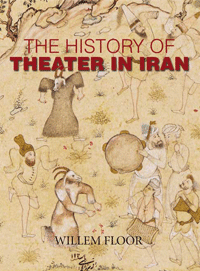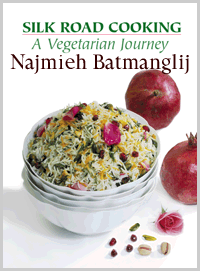 Soul of the earth Soul of the earth
Photo essay: Peeking into Guatemala
Keyvan Tabari
April 9, 2006
iranian.com
abstract: Guatemala City is the proverbial “Center” of the country. It is the political, economic, and cultural capital of Guatemala, and it has as many as thirty percent of its population. Tourists, however, are generally told to avoid its streets because they are unsafe. Instead they are taken to the provinces. There is much to see there. That way we saw Guatemala’s three other faces: the old Mayan, the indigenous highlands, and the colonial Antigua. Each had its charm and magic, but every time we came back to reality in Guatemala City, as all roads went through the capital.
keywords: Guatemala* Maya* Antigua.
* * *
Magic and Realism
“On behalf of the government of President ... and the people of Guatemala,” the Director of Tourism welcomed me to his country, which he described as “The soul of the earth!” This was in the pages of the glossy magazine Destination Guatemala which I found in my room. I was amused by the Director’s putting the President before the people. I was made especially curious about what kind of “soul” the earth might have. Guatemala was, of course, the land of Miguel Angel Asturias, the Noble laureate, a pioneer of the magic realism style of writing. He made his reputation as early as 1930 by publishing his landmark Legends of Guatemala. Asturias maintained that the indigenous Mayans’ nonrational perception of reality was an expression of the subconscious forces, the collective dream of mankind. In his epic Men of Maize, the mythical figure Gaspar Ilom speaks as though he is the earth itself. "Thus he spoke with his head separated from his body, pointed, warm, wrapped in the grey mop of the moon. Gaspar Ilom grew old as he was speaking. His head had fallen to the ground like a flower pot sown with little feet of thoughts..."
The first place we visited in Guatemala was the Ixchel museum. Ixchel was the Mayan goddess of textile -as well as several other related things: women, reproduction, and moon. For initiation to the all important art of textile we first watched a film produced by Linda Asturias. “Yes, related to Miguel,” the guide replied to my query. “The Asturias family is one of the major families of Guatemala. Miguel’s son ran for President recently.”
Beneath the veneer of democracy and the deeper layer of military rule, Guatemala’s elite continues to be defined in the oligarchical form of “families.” Families often lead opposing political sides. Asturias himself was a radical. A friend and collaborator of Pablo Neruda, he received the Lenin prize for literature even before his Noble. A critic of the United Fruit Company, he left Guatemala when the government of Colonel Jacobo Arbenz was overthrown with the help of the U.S. Central Intelligence Agency in 1954. By 1966, however, under a new president, Asturias was named Guatemala’s ambassador to France.
As our guide related it, political turmoil has been endemic in Guatemala. The Peace Agreement of 1996 ended a civil war that had lasted more than thirty years. As we drove by the house of the Minister of Defense, however, the graffiti on the wall was pointed out to us: “The Minister is in the employ of George Bush;” “Where is economic democracy?” We were on Avenue La Reforma, built to be the “Champs d’Elyse” of Guatemala City. But we were not allowed to come down from our tour bus because it was “unsafe.” For the same reason, we could also not step out into the central square or downtown. Indeed, we were confined to our hotel compound in Guatemala City.
The hotel claimed five stars, perhaps because it was several stories high, and had the now standard atrium, glass elevator, a gym and a pool. Its large lobby was lifeless. Our designated restaurant served a Western, and limited, menu of chicken and steak, bland except for excessive salt. This became our staple food throughout the country. The tour company had chosen the safest common denominator; diarrhea, however, could not be held back. I stepped into another, Thai, restaurant in the hotel and saw eight forty-something prosperous-looking Guatemalan couples at a rectangular table, all the men at one end and all the women at another. There was no cross gender conversation.
Attached to the hotel was a shopping mall. Its expensive stores did not show any sign of activity. I saw no one buying. Young Guatemalans were milling around. Teenagers drank Coca-Cola at tables in the corridors and awkwardly showed their sensual desires by touching each other’s arms stretched across, or gently hitting each other. These were middle class Guatemalans. The poor were outside. A bridge over the road connected the mall to the streets. I walked on the bridge and saw beggars. Down below men with guns were guarding stores and crowds were waiting for buses which were overflowing with passengers.
The very poor lived in shacks precariously hanging from the side of the ravines. The wealthy lived in another district of town. We did not see their gated “million dollar houses,” as our guide described them, when we drove to the highlands where the indigenous people lived.
 Indigenous of the Highlands Indigenous of the Highlands
Not far outside Guatemala City the economic landscape changed. This was an underdeveloped agrarian country. There were virtually no signs of industry. “We get an alarming proportion of our consumer goods from China,” our guide said. “The better homes you see here belong to those with relatives in the U.S. who send them money. There are 2.5 million Guatemalans living in the U.S.” The natural setting, however, was stunning. It was dominated by many volcanoes. The sky was clear blue. In this February the air was mild.
Handicrafts are what Guatemala considers worthy of the attention of tourists. Artisan vendors abound. “Bargain with them,” our guide said. “Don’t worry, they won’t lose money to you. Guatemalans are born capitalists.” The big open market in the highlands is on Sundays in Chichicastenango. Vendors come from surrounding villages. We headed straight there. Local buyers were few, compared to Western tourists including young back-packers. The overwhelming majority of vendors were women. They wore traditional costumes. The garments of the women were multicolored and geometric in design. The colors were intense red, green, blue, and yellow. Textiles were the dominant handicraft. There were some crude wood carvings. Christian religious figures were sold side by side with Mayan mythical masks. Food stalls offered local fair. Several young girls made tortillas on a round plate. The fruit and produce vendors sold watermelons, tomatoes, and red pepper. Amidst all this, two boys sat calmly playing cards.
Men milled on the front steps of the Santo Tomas Church at the threshold of the market. Most wore western clothes. On the highest step, several men played local instruments. A group from a Mayan religious brotherhood (confradia), held a procession on the steps. These men wore traditional costumes. There was much banging of drums and wailing of flutes. Later on in the day, outside Chichicastenango, we saw another such group with their banners and religious symbols walking down the highway back toward their village.
We approached Lake Atitlan. Beyond a curve, it emerged between three volcanoes. They looked oddly low at that high altitude. The white clouds among them were also low in the sky. The sky was crystal blue and the water of the lake the same, just darker. We took the boat to go to Santa Catarina at the lip of the lake where we would stay that night. As we landed, we were greeted by young girls in costumes special to this village which included a turquoise blue turban. The small hotel was full with western tourists. It was charming with breathtaking views of the lake.
As Santa Catarina awoke the next morning, I saw a big painted bus unloading goods on its main alley. Three women were receiving the merchandise. One of them wore western clothes and high heels. Across the way, two old women in traditional clothes passed by. They were barefoot. I did not notice any shoes to go with the traditional costumes of Santa Catarina. Some young girls wore plastic shoes. Raw sewage emptied in the lake. Some two hundred yards away, four women were washing clothes in the lake. The rays of the rising sun painted the calm water of the lake pink. There was a lonely fishing boat on the lake.
 In the bigger village of Santiago Atitlan on the other side of the lake, women wore orange turbans. As a main attraction for our visit, two of them unfurled their turbans and again wrapped them around their heads. The local painter had made it big. His house was the largest, and gaudiest on the main street which we climbed to reach the church. High school boys played soccer in the yard fronting the church. Smaller kids surrounded an ice cream seller. In the bigger village of Santiago Atitlan on the other side of the lake, women wore orange turbans. As a main attraction for our visit, two of them unfurled their turbans and again wrapped them around their heads. The local painter had made it big. His house was the largest, and gaudiest on the main street which we climbed to reach the church. High school boys played soccer in the yard fronting the church. Smaller kids surrounded an ice cream seller.
It was near Santiago that the local Mayan chieftain Tecun Uman lost his realm to the Spanish Conquistador Pedro de Alvarado in hand-to-hand combat. As our guide told it, the defeat was due to ignorance about superior tools of war. The Mayan had not seen a horse before and thinking that Alvarado and the horse were one and same creature attacked the horse, thus freeing Alvarado to aim at him, fatally.
On the way back to Santa Catarina we sat at the upper deck of the boat as my fellow traveller told me about her personal story of the Columbine high school tragedy when two students went on a murderous rampage on the campus. She was the drama teacher. You could almost see the images of that turmoil in her brown iris. “One of them was my student, a perfectly normal person.” It was perfectly peaceful here on the lake. Our view was framed by a rare beauty: a young Santa Catarina girl with her blue turban and her merchandise on her lap, riding back. Having exhausted our market, she was relaxed. Her smile showed perfect teeth and her unwrinkled face had not yet seen the hard life of her elders. [23]
“My husband is amazing,” my conversationalist now said pointing to him walking around the deck. “He has had a heart attack and a stroke and he still climbs mountains.” The wind was picking up, there were white caps on the lake. The empty plastic chairs rattled and then moved. I felt a chill. We went down to the enclosed area of the boat. That afternoon I came down with symptoms of a bad cold. My fever was so intense that I felt delirious. I had no cold medicine with me as I had come to Guatemala as a tropical destination of heat and humidity. The guide had said he had all the medicine we needed. This, however, meant only those for the expected problems of diarrhea. He did not even have a thermometer. He advised that I sweat the fever out. He consoled me that the next day we would be descending toward the jungles. When we got there, alas, a cold front in the north had caused a precipitous drop in the normal temperature. This being highly unexpected, our hotel did not have a heating system. I asked for a space heater. They did not have one. Instead of a blanket they brought me another bed spread.
Legacy of the Mayans
We had crossed the border and ventured a few miles into Honduras in order to see the Mayan ruins in Copan, a UNESCO World Heritage site. We spent much time looking at the slanted stone surface where the Mayans played their ball game. “We don’t know much about the rules of the game,” our guide said, “but sometimes the one who won, and sometimes the one who lost would be sacrificed.” Blood sacrifice was important in the Mayan tradition. “It was considered to be a great honor to be the one sacrificed,” the guide said. The hieroglyphic stairway nearby told the story of the 300 years of a dynasty that the shaman, Great Sun Lord Quetzal Macaw, had established it in the fifth century. Unlike the macaw, quetzal, which is the national bird of Guatemala, is so rarely seen that it is almost a mythical image. The other kings’ names on the stairway also connoted connection to myth and the surrounding jungle habitat: Smoke Jaguar, Smoke monkey, and 18 Rabbit. The latter was the most important, judging by the stelae that praised his glory. He lost his head in the war with his rebellious subordinate, the ruler of Quirigua, Sky King. They had agreed to settle their differences in a ball game. Eighty year old 18 Rabbit was no match for the upstart challenger of 24. Sky King then decapitated him. I climbed the stairway in Copan and took in the panorama. Except for a wall to prevent the encroachment of the errand river nearby, the land beyond seemed still untouched by man for miles.
The major removable artifacts of Copan had been recently moved to a local museum. Then the walls of the museum collapsed. “Mayans built monuments to last thousands of years,” our guide said, “The corrupt contractors’ museum did not last 2 years.”
In the little town of Copan Ruinas, in the plaza before the church that had a lonely cocoa tree in its yard, we sat to hear the tale of 300 mercenaries who were assembled here in 1954 to engineer the overthrow of the Arbenz government. “There were some Guatemalans, but also Hondurans and French Legionnaires,” our guide said. “The secret of their success was that they took over the two planes which constituted the entire Guatemalan air force and terrorized the opposition by strafing the national palace and the Main Square of Guatemala City.”
 We did not see many of the animals depicted in Mayan monuments: jaguar, serpent, or frog. In fact, we did not see many wild animals at all in Guatemala. In the preserves of Flores we gathered at the sunset to trace the shadow of a crocodile in the pond before us. The changing honey colors of the sky with some clouds, reflected in the pond, attractive us more: not only red, pink, crimson, fuscha, and purple, but also orange, beige, and brown. We did not see many of the animals depicted in Mayan monuments: jaguar, serpent, or frog. In fact, we did not see many wild animals at all in Guatemala. In the preserves of Flores we gathered at the sunset to trace the shadow of a crocodile in the pond before us. The changing honey colors of the sky with some clouds, reflected in the pond, attractive us more: not only red, pink, crimson, fuscha, and purple, but also orange, beige, and brown.
We heard the sound of howler monkeys in the dense canopy of Tikal. High up on the tree they jumped too often to afford a good look. Instead, this Mayan metropolis which once had a population of 100,000 people offered majestic monuments to kings, legends, and imagined cosmology. We heard about the heavens, the earth, and the underworld which interacted in accordance with Mayan astrological rules, ancestral worship, and cyclical time. The numbers 3, as in spirits, 9, as in celestial levels, and 19, as in magical steps, cropped up on the structures as well as in the lectures by our guide. Equally tangible were signs of the royal family who used these beliefs to rule the underclass: King Great Jaguar Paw, Lord Chocolate, and General Smoking Frog. The General was yet another, maybe the earliest, strategist successfully to employ superior technology, air power, to defeat adversaries in Guatemala: rather than personal combat, he encircled the enemy and threw spears to kill them from a distance.
In their own way, the Mayans could be magnanimous in victory. In Quirigua we saw a a zoomorph ordered by Sky Monster which carved in stone the decapitated corpse of 18 Rabbit and his own subsequent dreams invoked by hallucinogens, but also honored 18 Rabbit’s father.
Our tour director was not as generous to the memory of the defunct United Fruit Company, whose vast former banana plantation we now visited. For desert we were served not bananas, but apples. “From Washington state,” he said.
Back to Antigua
Her long pashminah shawl had a cheshmeh bolbol Kashmiri design and her bag was by Fendi. She sat next to me on the plane from Guatemala City. She was a designer for a Guatemalan candle company on her way to negotiate with Pottery Barn in San Francisco. “The wax comes from China,” she said. She was tall and large-boned. Our guide had pointed out the small size of the indigenous people: “barely four feet.” This Guatemalan lady was over six feet. She told me that she had three “beautiful daughters.” I asked who was taking care of them while she was away. “We have a lot of help in Guatemala. I have two nannies.” She lived in the ritzy Zona 15 in Guatemala City. I told her that with so many cars in Guatemala City I was struck by the fact that so few were on the country roads. “Where do you go for vacation in Guatemala?” I asked. “Antigua,” she said. “It has this tree with flowers that incredibly relax you.”
 On the Sunday I visited it, the lobby of Antigua’s plush hotel Casa Santa Domingo was full of rich Guatemalans. Its church that was built on the remains of the old monastery was being readied for a wedding. There were rows of white and red flowers on the sides of the middle aisle. In the candle shop next door, a young salesgirl asked me, “Do you like my flowers?” She had been given a few for her desk. Elsewhere on the grounds of the hotel there was a museum that showed matching Pre-Colombian artifacts and modern Swedish and French art inspired by them. The exhibit had just come down from New York’s Metropolitan Museum. On the Sunday I visited it, the lobby of Antigua’s plush hotel Casa Santa Domingo was full of rich Guatemalans. Its church that was built on the remains of the old monastery was being readied for a wedding. There were rows of white and red flowers on the sides of the middle aisle. In the candle shop next door, a young salesgirl asked me, “Do you like my flowers?” She had been given a few for her desk. Elsewhere on the grounds of the hotel there was a museum that showed matching Pre-Colombian artifacts and modern Swedish and French art inspired by them. The exhibit had just come down from New York’s Metropolitan Museum.
Outside the hotel, Western tourists mingled with Guatemalans in the colonial era streets of cobble-stones and bright colored walls. Even buildings damaged in past earthquakes were picturesque with red bougainvilleas decorating them. On some sidewalk vendors had spread their goods. Galleries sold expensive paintings. The Catholic church was crowded.
Spring was in the air. I went to the Central Park and sat with the locals on the stone bench under the double-arcaded front of Captain-Generals’ Palace. This was the vantage point from which to view the flow of people, cars, bicycles, horses, strollers, and ice cream carts. A volcano rose on the horizon. The water from the fountain was made silvery by the rays of the fading sun. A man was preaching his gospel in front of it. Nobody paid attention to him >>> Photos
About
Keyvan Tabari is an international lawyer in San Francisco. He holds a PhD and a JD, and has taught at Colby College, the University of Colorado, and the University of Tehran.
|